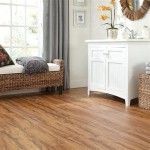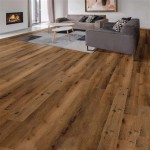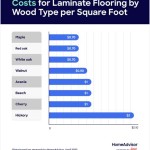Can You Install Hardwood Flooring Over Concrete Slab?
The question of whether hardwood flooring can be installed directly over a concrete slab is a common one for homeowners considering flooring upgrades. While aesthetically appealing and offering lasting value, hardwood's interaction with moisture makes the installation process over concrete more complex than simply laying planks. Understanding the nuances of this process is crucial for ensuring a successful and durable hardwood floor.
Concrete, by nature, is porous and can wick moisture from the ground. This moisture can negatively impact hardwood flooring, causing warping, cupping, buckling, and even mold growth. Therefore, installing hardwood directly onto concrete without proper preparation and moisture mitigation is a risky endeavor that can lead to costly repairs and premature floor failure. However, with the right methods and materials, installing hardwood over concrete is achievable.
Several factors determine the feasibility and appropriate method for installing hardwood over concrete. These include the moisture content of the concrete slab, the type of hardwood being used, and the intended use of the space. A thorough assessment of these elements is paramount before proceeding with any installation.
Assessing the Concrete Slab's Moisture Content
The first, and arguably most important, step is to determine the moisture content of the concrete slab. This assessment will dictate the necessary moisture mitigation steps required for a successful installation. There are two primary methods used for measuring moisture levels in concrete: the calcium chloride test and the relative humidity (RH) test.
The calcium chloride test, also known as the anhydrous calcium chloride test, involves placing a pre-weighed container of calcium chloride under a sealed dome on the concrete surface for a specified period, typically 72 hours. The calcium chloride absorbs moisture from the concrete, and the weight gain is then used to calculate the moisture vapor emission rate (MVER). This rate, measured in pounds per 1,000 square feet per 24 hours, indicates how much moisture is being released from the concrete. Most hardwood flooring manufacturers have specific MVER limits for their products, and exceeding these limits necessitates further moisture mitigation.
The relative humidity (RH) test, in contrast, measures the amount of moisture within the concrete slab itself. This method involves drilling small holes into the concrete and inserting sensors that measure the RH. The sensors are typically left in place for at least 72 hours to allow for equilibration. The RH reading provides a more accurate representation of the long-term moisture conditions within the slab compared to the MVER test, which only reflects the surface moisture emission rate. Hardwood flooring manufacturers often specify RH limits for their products, and exceeding these limits requires moisture mitigation strategies.
Regardless of the method chosen, it is crucial to conduct these tests in multiple locations across the slab to account for variations in moisture levels. Areas near exterior walls, plumbing fixtures, and potential water sources should receive particular attention. The results of these tests will guide the selection of appropriate moisture mitigation techniques.
Moisture Mitigation Techniques
If the moisture tests reveal elevated levels, several moisture mitigation strategies can be employed. The choice of method depends on the severity of the moisture problem, the budget constraints, and the desired longevity of the flooring installation.
One common approach is to apply a liquid moisture barrier to the concrete surface. These barriers are typically epoxy-based or urethane-based coatings that create an impermeable layer, preventing moisture from migrating into the hardwood flooring. Before applying a liquid moisture barrier, the concrete surface must be thoroughly cleaned, prepared, and, in some cases, primed to ensure proper adhesion. The manufacturer's instructions for application and curing times should be strictly followed to achieve optimal performance.
Another strategy involves the use of a subfloor system with a built-in moisture barrier. These systems typically consist of a layer of polyethylene film or other moisture-resistant material topped with a plywood or oriented strand board (OSB) subfloor. The subfloor provides a stable and level surface for the hardwood flooring, while the moisture barrier protects the flooring from moisture rising from the concrete. Some subfloor systems also incorporate air gaps or channels to further enhance ventilation and reduce moisture buildup.
A third option is to install a floating hardwood floor over a vapor barrier. Floating floors are not directly attached to the subfloor, instead relying on interlocking edges to hold the planks together. This method allows for movement and expansion of the hardwood, which can be beneficial in environments with fluctuating humidity levels. A vapor barrier, typically a thin sheet of polyethylene film, is placed between the concrete and the floating floor to prevent moisture from reaching the hardwood. While this method is often considered simpler than direct gluing or nailing, it still necessitates careful attention to moisture levels and proper installation techniques.
Installation Methods for Hardwood over Concrete
Once the concrete slab has been properly prepared and moisture mitigated, the hardwood flooring can be installed. There are three primary methods for installing hardwood over concrete: direct gluing, direct nailing, and floating installation. Each method has its own advantages and disadvantages, and the choice depends on the type of hardwood, the subfloor condition, and the desired performance characteristics.
Direct gluing involves applying a specially formulated adhesive directly to the concrete surface and then pressing the hardwood planks into the adhesive. This method provides a strong and secure bond between the hardwood and the concrete, minimizing movement and noise. However, direct gluing requires a perfectly level and smooth concrete surface, as any imperfections will be transmitted to the hardwood flooring. It also necessitates the use of a high-quality adhesive that is specifically designed for hardwood flooring and concrete substrates. Proper trowel techniques are crucial to ensure adequate adhesive coverage and prevent voids or air pockets.
Direct nailing, in contrast, involves fastening the hardwood planks to a wooden subfloor that is attached to the concrete. This method typically involves installing wooden sleepers or furring strips onto the concrete using concrete nails or adhesive. The hardwood planks are then nailed to the sleepers, creating a solid and stable floor. Direct nailing provides a more forgiving surface than direct gluing, as the sleepers can help to level out minor imperfections in the concrete. However, this method raises the floor height, which may be a concern in some applications. It is also important to use pressure-treated lumber for the sleepers to prevent rot and decay from moisture exposure.
Floating installation, as previously mentioned, involves interlocking the hardwood planks together without directly attaching them to the concrete. This method relies on the weight of the floor and the friction between the planks to hold the flooring in place. Floating floors are typically installed over a thin foam underlayment, which provides cushioning and helps to reduce noise transmission. This method is often considered the easiest and fastest way to install hardwood over concrete, but it may not provide the same level of stability and durability as direct gluing or nailing. It is also important to ensure that the subfloor is level and free of debris before installing a floating floor.
In summary, installing hardwood flooring over a concrete slab is a complex undertaking that requires careful planning, thorough preparation, and meticulous execution. The success of the installation hinges on accurately assessing the moisture content of the concrete, implementing appropriate moisture mitigation strategies, and selecting the most suitable installation method for the specific circumstances. Ignoring any of these steps can lead to costly problems and premature floor failure. Consulting with a qualified flooring professional is highly recommended to ensure a successful and long-lasting hardwood floor installation over concrete.

How To Install Tongue Groove Hardwood Floors Over Concrete

Guidelines For Hardwood Floor Installation Over Concrete

How To Install A Wood Subfloor Over Concrete Rona

Is Installing Hardwood Flooring Over Concrete A Feasible Task Canadian Home Style

Installing A Hardwood Floor Over Concrete Slab American Information Center

How Do I Install A Hardwood Floor On Concrete Slab The Carpet Guys

How To Install Hardwood Floors On Concrete Slab Easyklip Easiklip

Ask Fred How Do I Install Wood Floor Below Grade Schedule

Can You Install A Wood Floor Over Concrete

Fitting Hardwood Floor To Concrete Wood And Beyond Blog
Related Posts








